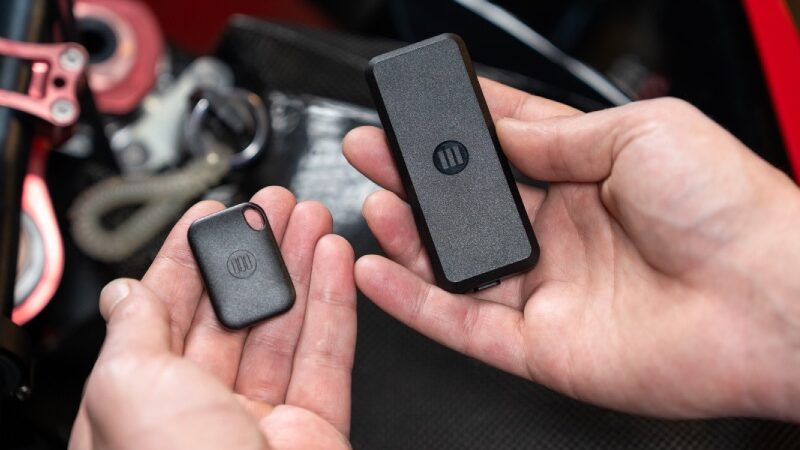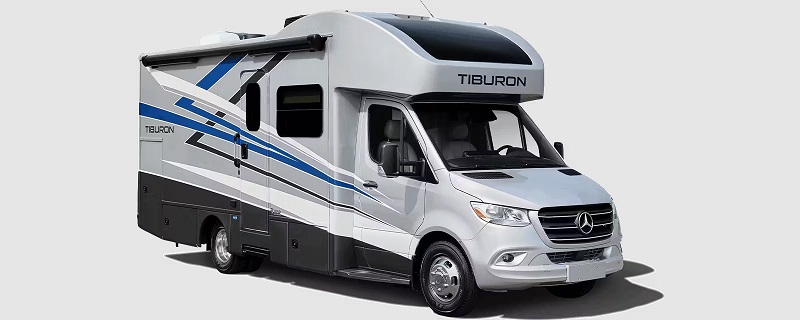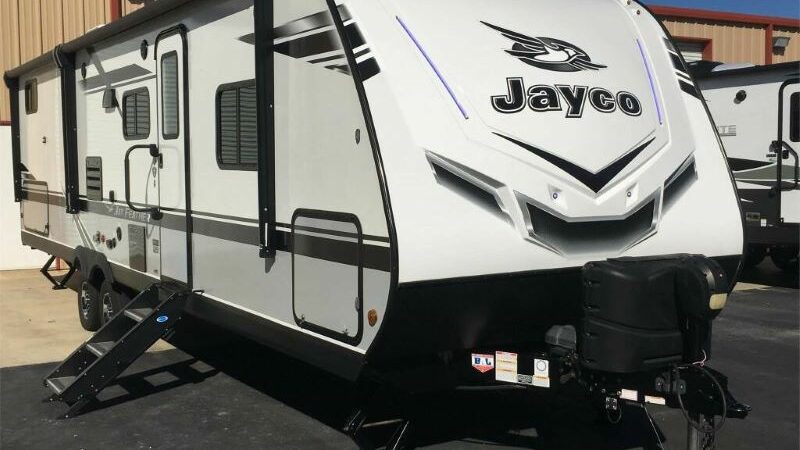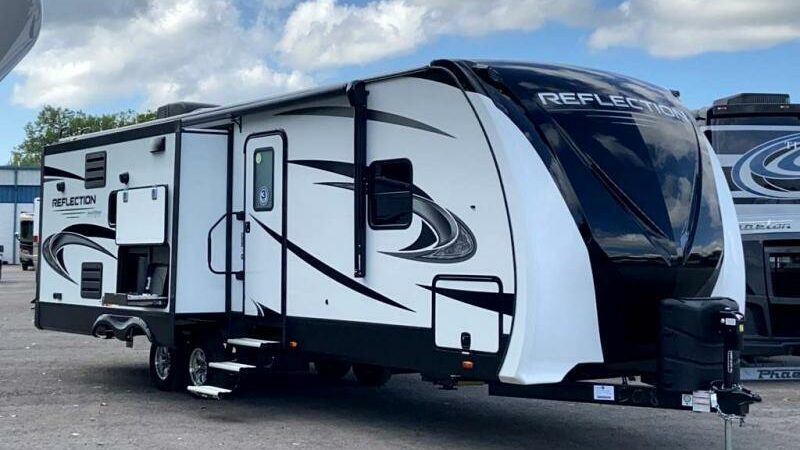How Often Should I Service My RV Generator?
Thanks for your support! If you make a purchase using our links in this article, we may make a commission. And, as an Amazon Associate, I earn from qualifying purchases. See the full disclosure here.
Like every component in your moterhome or travel trailer, you must service your RV generator periodically to enjoy the optimal electrical power you enjoy at home. Servicing your RV generator can save you a lot of money and aggravation in the long run.
How often should you service your RV generator? What are the different parts you need to service? In this article, we’ll answer those questions and more.
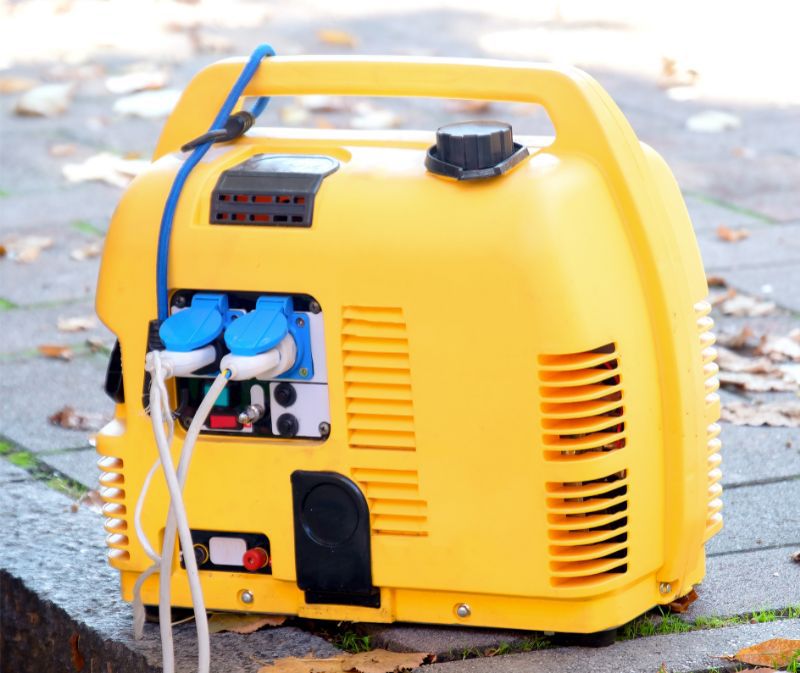
Why Should You Service Your RV Generator?
You should service your RV generator for the same reason you should maintain anything else in your RV. Regular maintenance:
- Extends your generator’s lifespan
- Helps you avoid costly repairs
- Prevents your generator from breaking down when you need it the most
If you don’t service your RV generator, your generator will likely experience overheating, reduced power output, and generally deteriorated function. And your RV generator’s lifespan will decrease significantly.
After How Many Hours Should You Service Your RV Generator?
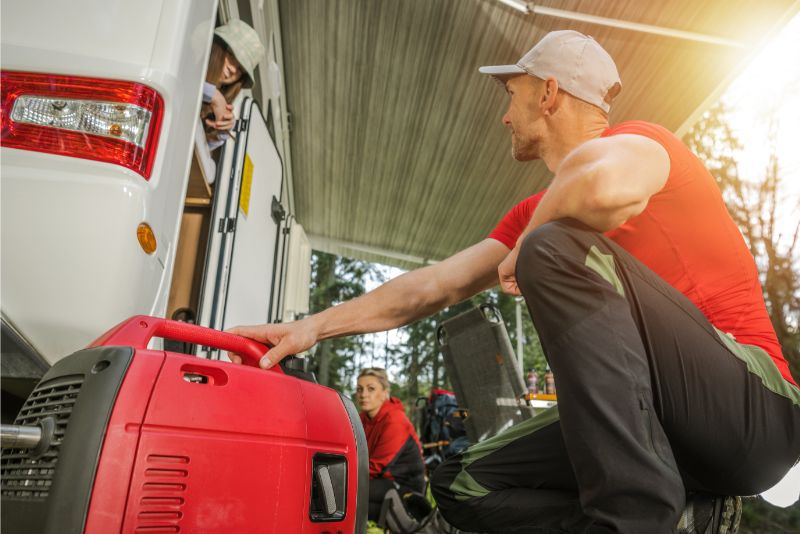
RV generator parts are measured based on hours of operation. After a specific amount of hours, certain components need maintenance or replacement. Each part has a different time measurement. Also, the expiration hours differ between RV generators.
For example, one model could require an oil change every 150 hours of use. Yet another model from the same manufacturer could push that limit up to 200 hours. Your owner’s manual will tell you the exact hour limits to service your RV generator’s various components.
That said, there are some rules of thumb for how often you should service your RV generator’s various parts. Generally speaking, you should:
- Do a visual inspection about every 10 operating hours
- Change the oil filters every 100 to 150 operating hours
- Change the fuel filter every 400 to 500 operating hours
- Check the slip rings and brushes every 500 operating hours
- For diesel generators, drain the water every 100 hours (if required)
How Often Should I Test My RV Generator?

Ideally, you should test your RV generator at least once a month if it hasn’t been used. To test your RV generator, simply turn it on and let it run for 20 to 30 minutes with your RV’s AC and some electronics running (TV, appliances, plugged-in devices, etc.). While your generator is running, check for any abnormal sounds, vibrations, or leaks.
Running your RV generator regularly like this is often referred to as “exercising” the generator. It not only lets you confirm the generator is still working, but it also helps maintain the generator. By letting your RV generator run, you help keep all the parts lubricated, prevent fuel from degrading, and avoid moisture buildup.
How Often Should I Change the Oil in My RV Generator?
Much like your RV’s engine, your RV generator uses oil to lubricate its various moving parts. Also like your engine, your RV generator needs an oil change periodically.
Exactly how often you should change the oil in your RV generator varies depending on your exact model of generator. Check your RV generator’s service manual to find exact numbers.
That said, most RV generators need an oil change every 50 to 200 operating hours. When changing your RV generator’s oil, be sure to use recommended oil specified in your RV generator’s service manual.
What’s the Typical Life of an RV Generator?
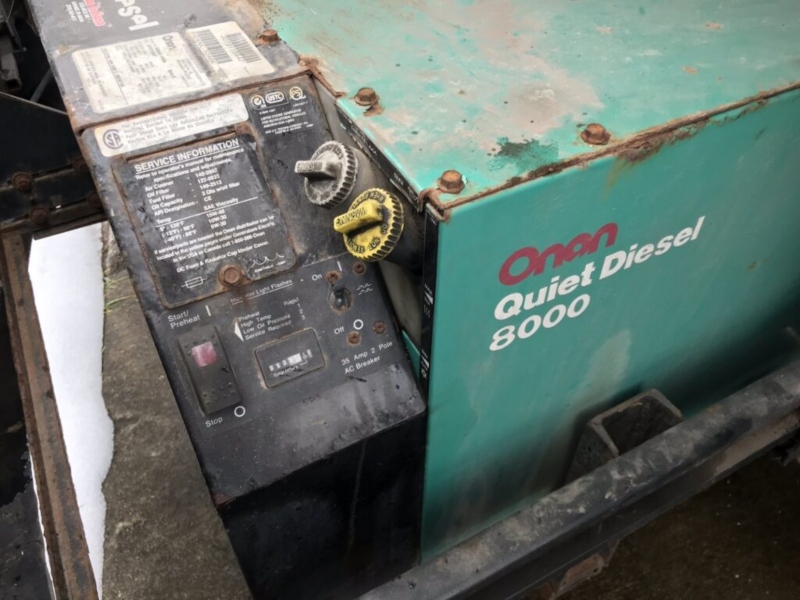
The lifespan of your RV generator depends on a number of factors:
- Whether it’s a portable or an on-board generator
- How well it’s maintained
- The quality of the generator
With proper care, RV generators can last quite a long time.
At the low end, such as for value brand generators that work harder and/or generators that are not well-maintained, you may get around 1,000 operating hours out of your generator. While it’s not great compared to the lifespan of other generators, that’s still a year or two of regular use.
Most RV generators will last much longer though, especially if well maintained. Typically, RV generators will last between 10,000 and 25,000 hours of operation.
That’s enough to run the generator for 5 hours every single day for 2,000 to 5,000 days, or about 5 to 13 years. Realistically, that means you can get 10 to 20 years out of an RV generator. With proper maintenance, it’s possible for an RV generator to last even longer.
7 RV Generator Maintenance Tips for Gas Generator
Let’s take a look at all the different tasks for servicing an RV generator and how often you should do them.
1. Visually Inspect the Generator
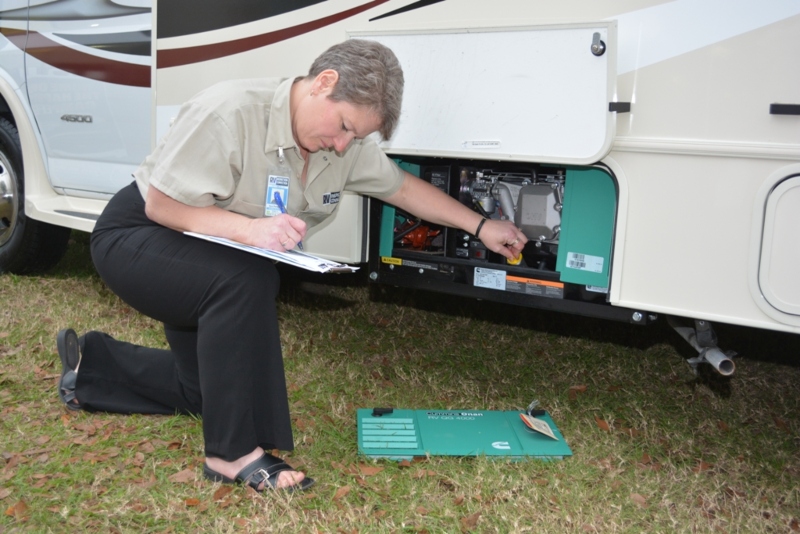
One of the easiest parts of servicing your RV generator is a visual inspection. You should do a visual inspection at least once a month when exercising your RV generator.
Make sure your RV generator is clean, dry, and has no obvious issues. Look for any leaks, cracks, corrosion, or other damage that could indicate a more serious problem.
2. Check or Service Your RV Generator’s Oil
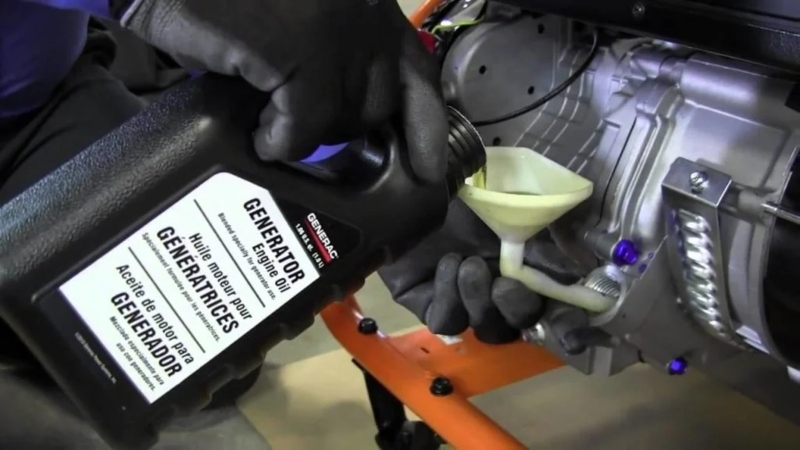
When you service your RV generator, you should check the oil and oil filter. Your RV generator will typically have a dipstick for checking the oil level, just like you’d find in your engine.
If the oil level is low, top it off using the same oil that’s already in the RV generator. If you need to, you can always consult the recommended oil in your owner’s manual.
3. Test the RV Generator Connection to the House Batteries
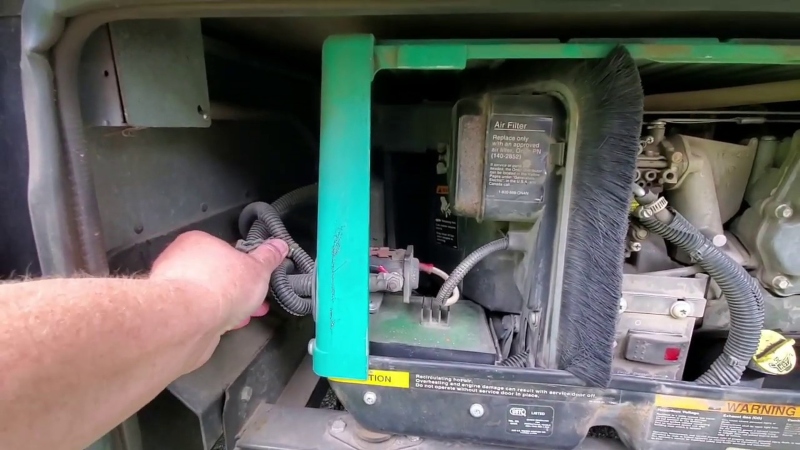
For built-in RV generators, you want to check the connection to the house batteries. See our full discussion on battery maintenance in Does an RV Battery Charge When Plugged Into Shore Power for further details.
Meanwhile, check for corrosion on the battery terminals, exposed wiring in both the generator and battery bays, and other possible problems. While this should be a part of your RV maintenance checklist routine, it’s best to complete a visual inspection monthly.
4. Change the RV Generator’s Fuel Filters
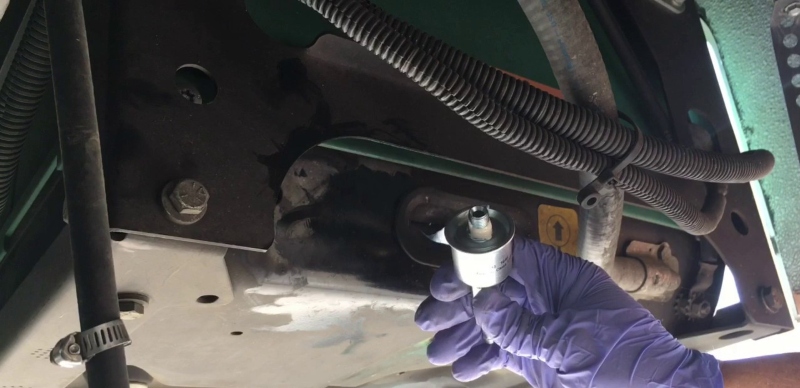
You’ll need to change your RV generator’s fuel filters about once every 500 operating hours. The location of the fuel filter varies from generator to generator, so be sure to consult your owner’s manual.
In some cases, your RV generator may have two fuel filters. Also, avoid using plumbing Teflon tape. These filters create a good seal by themselves.
5. Service the RV Generator’s Air Filter
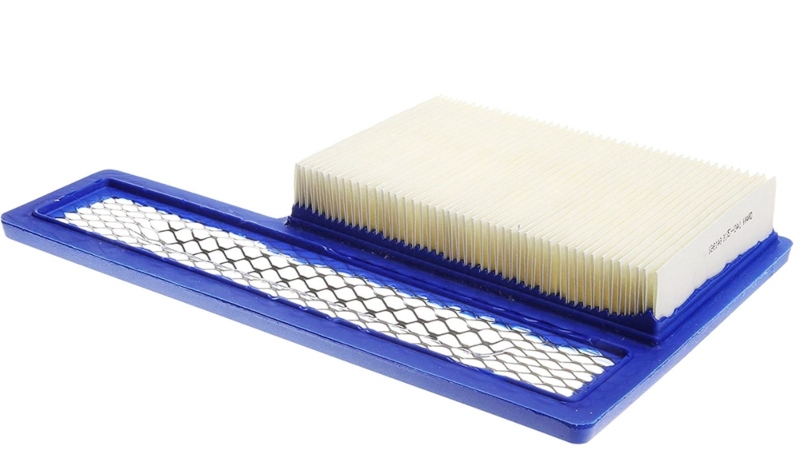
Your RV generator’s air filters will need to be replaced around every 400 hours or more frequently in dirty, dusty environments. If you don’t replace a dirty air filter, your RV generator’s performance will begin to seriously deteriorate.
Between replacements, you can pull out the air filter and tap it out to remove any collected dirt and debris. This will help maintain your RV generator’s performance.
6. Replace Your RV Generator’s Spark Plug
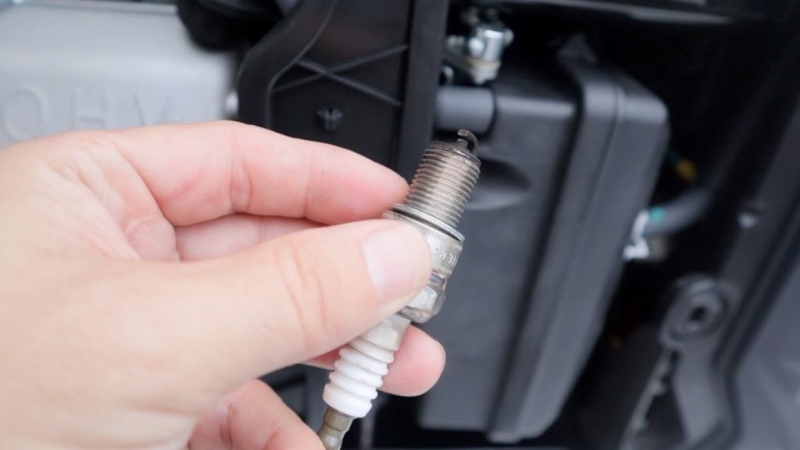
You’ll need to replace the spark plugs in your RV generator about every 450 hours. Spark plugs generate the spark that makes the generator’s engine run, and if they stop working, so does your RV generator. Depending on your generator model, you’ll need to replace either one or two spark plugs.
Keep in mind that this only applies to gas generators. For diesel generators, there are no spark plugs to replace.
7. Store Your RV Generator Properly
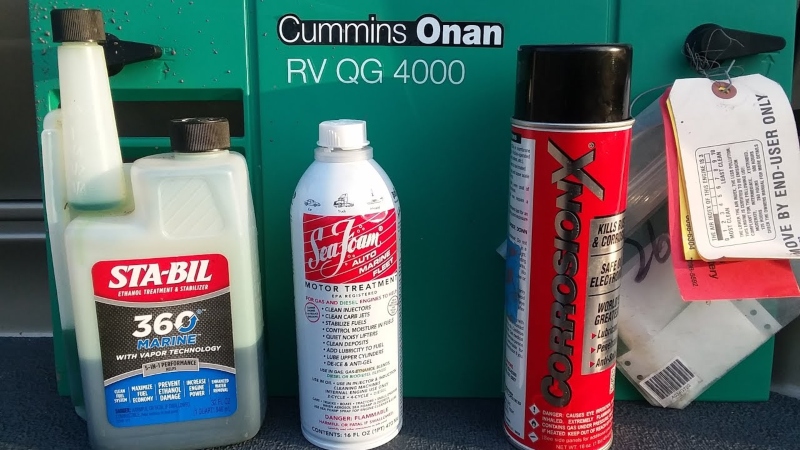
When you put your RV in storage, your RV generator will likely go along with it. Just like your RV, your generator will need to be properly prepared and stored. Before storing your RV generator:
- Complete a full inspection
- Check the oil levels
- Clean any dirt and debris
- Replace any filters or spark plugs if needed
Once you’ve ensured everything is in good order, you’ll need to either empty out your fuel or stabilize it. If untreated fuel is left in the generator, it will go bad and won’t power the generator when you need it next.
Also, today’s gasoline has a certain percentage of ethanol in it. Ethanol contains water moisture that can rust your engine components. To avoid this, you can empty out the fuel by running the generator until the fuel tank is empty.
Alternatively, you can add a fuel stabilizer liquid to a full fuel tank and run the engine for a minute to properly distribute it. The fuel stabilizer protects the fuel from the ethanol moisture, protecting your RV generator’s internal parts.
Other Tips to Maintain Your RV Generator

A great way to help you maintain your RV generator is to keep a maintenance schedule, so you never forget to service your generator. Keep track of any service done to your RV generator and how many hours you operate it.
To make things easier, you can make a maintenance schedule in a maintenance app. Here are some universal and brand specific apps worth looking into:
Make a Plan to Service Your RV Generator
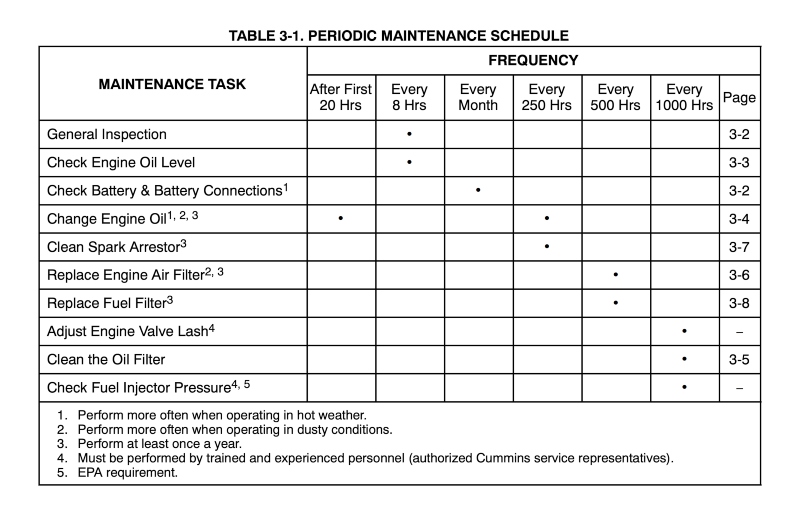
There are a number of different tasks involved in servicing your RV generator and they aren’t done all at the same time. You should test your generator and check your house battery monthly. Complete an oil change service on your RV generator every 50 to 200 hours that includes replacing the air filters, fuel filters, and spark plugs every 400 to 500 hours.
To help keep track of the service schedule for your RV generator, it’s important to have a plan and stick to it. Keep a physical schedule, or use a maintenance app to help you. If you stick to the plan and properly service your RV generator, you’ll be able to enjoy it for years to come.
1. RV Generator Box Guide: FAQ, Top Picks, & More
2. 10 Best Portable and Quiet Generators for Camping
3. Can I Run The RV Generator While Driving?
4. What Size Generator Do I Need For a Travel Trailer?
5. 5 Best Generator Mounts for a Travel Trailer
6. 115 Point RV Inspection Checklist (New or Used)
About the Author
Jennifer is a full-time RVer and part-time van lifer. She is one half of DashboardDrifters.com and the founder of RVSpotDrop, a web service for full-time RVers.

Source: https://rvblogger.com/blog/how-often-should-i-service-my-rv-generator/


